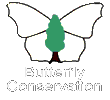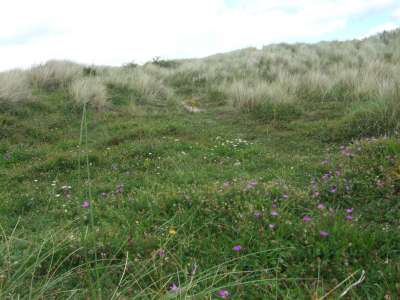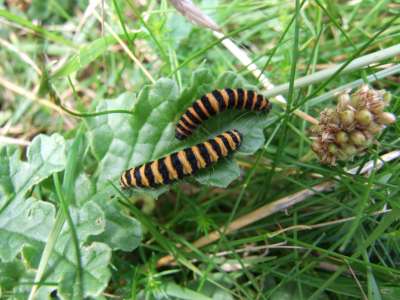
| Butterfly Conservation | |
| saving butterflies, moths and their habitats |
 |
|
|||
| North East England Branch | ||||
|
Coastal Dunes. Although they are not well represented on the Durham Coast, Northumberland has some of the longest stretches of more or less unbroken coastal dunes to be found anywhere in the UK with extensive dune systems to be found on Holy Island, between Bamburgh and Beadnall Bay and at Druridge and Alnmouth Bays. Sand dunes have a vegetational succession in which the seaward 'mobile' dunes are dominated by marram grass, which plays a key role in binding the sand and fixing the dune, and the landward 'fixed' or mature dunes have a more diverse grassland vegetation. In Northumberland this vegetation can be flower rich with typical species including lady's bed-straw, yarrow, bird's foot trefoil, restharrow, bloody crane's-bill, viper's bugloss and burnet rose. An obvious feature of dune systems is the structural diversity they present with low lying 'slacks' that are sometimes flooded, slopes facing in a variety of different directions and areas of bare sand as well as areas with complete vegetation cover with both close-cropped and rank vegetation. This in turn creates a range of micro-climates that can provide favourable conditions for invertebrates including moths and butterflies. 
Flower rich turf in dunes at Druridge Bay. Photo: J Wallace. Typical butterfly species on Northumberland's dunes include Meadow Brown, Small Copper, Small Heath and Common Blue butterflies throughout whilst, on Holy Island and in the dunes on the northern mainland, these are added to by Dark Green Fritillary and Grayling. The latter two species have their regional strongholds in the North Northumberland Dunes. Moth species occurring in Northumberland's dunes include Yellow Shell, Drinker, Six-spot Burnet, Garden Tiger and Cinnabar. The latter species is largely restricted to the coast in our region but can be particularly abundant and conspicuous in the dunes where the caterpillars may completely exfoliate large stands of ragwort. 
Cinnabar moth catarpillars. Photo: J Wallace In contrast to other habitat types in the region, virtually all of the dunes along the Northumberland Coast are accessible to the public.
|
| Copyright Butterfly Conservation © 2008 North East England Branch |
| Privacy and Copyright Statement |
| Butterfly Conservation: Company limited by guarantee, registered in England (2206468) Registered Office: Manor Yard, East Lulworth, Wareham, Dorset, BH20 5QP Charity registered in England & Wales (254937) and in Scotland (SCO39268). |